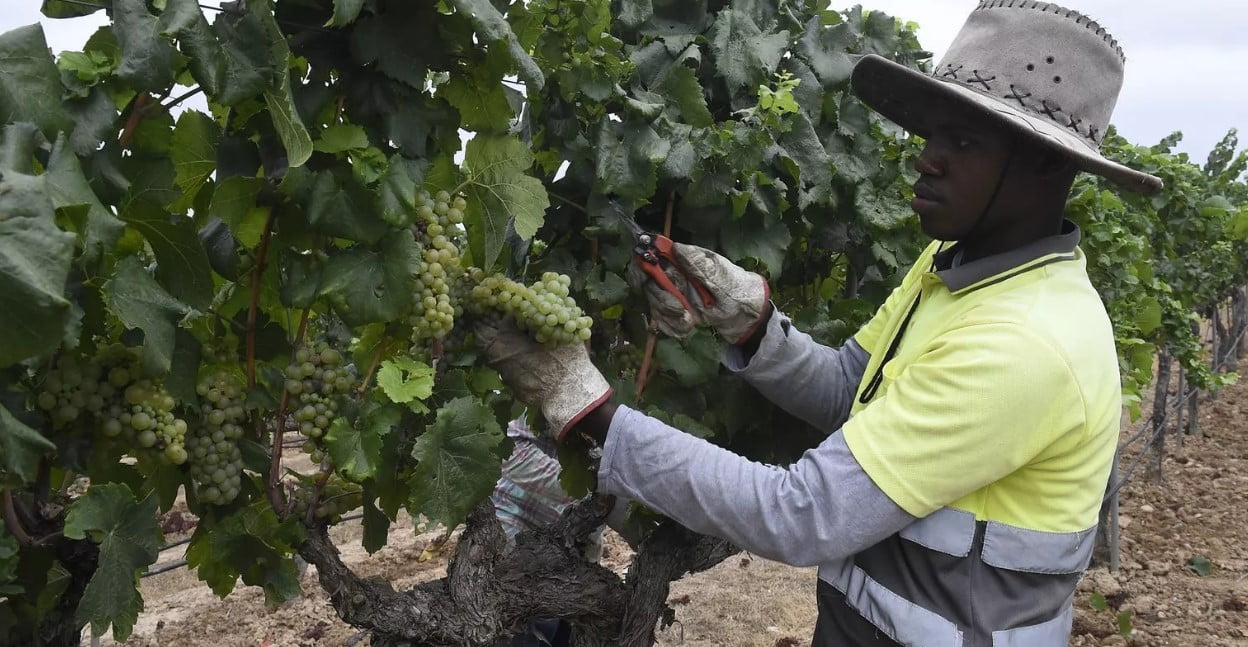
Spain starts the earliest harvest in 100 years by heat
The harvest has already begun. The winery Raimat, in the Segrià, one of the main producers of grapes in Catalonia, has already done the traditional advertising campaign. But he did it a week earlier than usual. It is the first time in a hundred years of history of the winery, in fact, that the grapes begin to be harvested in July.
Grape growers across Catalonia admit that they are facing an unprecedented campaign because of the drought and the latest heat waves, especially those that took place during the month of June. «The temperature has been very high and some varieties, especially the earliest ones, have been affected», explains Robert Savé, expert in viticulture and climate change and researcher emeritus of the Institute of Agrofood Research and Technology (IRTA). These early varieties are basically chardonnay, muscat, macabeo and pinot noir. «If we do not advance the harvest, these varieties could end up giving an excessive degree of alcohol to the wine», concludes Savé.
«The average temperature in Raimat has not been exceptionally different from the average of the last decade, but they have affected the heat waves of June», said the director of the winery Raimat, Joan Esteve. In areas such as Terra Alta, the varieties syrah and cariñena «also suffered a lot from these waves», IRTA sources add.
But, in addition to temperatures, the impact of drought is also being added. «The grape is hydraulically too stressed and not ripe enough», warns the head of the vineyard of the Unió de Pagesos union, Josep Marrugat. Although the drier years allow to minimize the possibility of pests and diseases in grapes and reduce the use of phytosanitary, «this year the drought is being excessive», concludes Marrugat.
The estimate of the unions is that in this campaign will not be harvested 400 million kilos of grapes in the whole of Catalonia (last year were about 420), while the Catalan Vineyard and Wine Institute (Incavi) sets the reduction of production at around 15%. Some rain-fed producers (representing 70% of all Catalan vineyard lands) set the decline at more than 50%. «It is a disastrous campaign», acknowledges Ramon Boleda, a farmer from Verdú (Urgell) who recalls that the sector is also severely affected by attacks by wildlife, especially rabbits.
Carme Domingo, technical engineer of the Incavi, explains that his estimates, which are based on the sampling of his technicians and those of the Catalan appellations of origin, are based on the probable fall of the Macabeo variety, one of the most important in the country. «We have verified that the number and the measure of the grain of this grape this year are being smaller than in previous campaigns», argues Domingo.
In any case, experts remember that the campaign is just beginning and that estimates may vary depending on the rainfall that may fall during the coming months. The rainfall that was recorded last Thursday in different parts of Catalonia can help a possible mitigation of drought, «but were too irregular rains», Marrugat says.
Adapting to climate change
The managers of the winery Raimat recognize that their vineyards will not suffer a drop in production (estimated every year at 6.5 million kilos), especially thanks to irrigation. In spite of everything, the director assures that the high temperatures are expected more frequent in the future and this forces the winery «to adapt and to look for techniques to mitigate it». In this sense, your winery has the ability to use irrigation whenever heat waves are foreseen. «With the help of the IRTA we have the ability to make forecasts a week in a row», explains Esteve.
For rain-fed farmers, heat mitigation techniques obviously have to be different. On the one hand, a reduced pruning of the traps is proposed so that they have more shade and, on the other, the recovery of ancestral varieties. Precisely the IRTA is working on several projects to rescue types of grapes that historically had been dismissed because they ripened too little by little. With climate change, what was once a defect of this grape is now becoming an advantage.
Combination of clones and even genetic modifications are other options that the IRTA proposes as alternatives to face the future high temperatures of the field.
Technological adaptation to the new climate situation, added to the rise in prices of fuels and plant protection products (especially sulphur and copper), is making grape production increasingly expensive. For the first time, the Climate Action department published two weeks ago a study of the production costs in the vineyard, which have been shown to be higher this year than in previous campaigns. According to this report, long demanded by the unions to «provide more transparency and equity to the value chain», grape production has become more expensive five cents per kilo on average. «Until now we were living a situation of abuse and, with this data in hand, we will be able to raise awareness of the wine sector and, in the long run, the consumers themselves», argues the head of Unió de Pagesos.
SOURCE: ES.ARA.CAT
